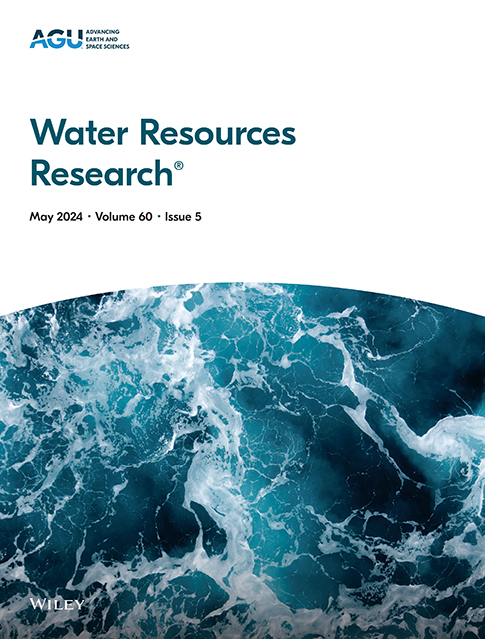Quantification of Mixing Depth Using the Gradient Richardson Number in Submerged Aquatic Vegetation Meadows
IF 4.6
1区 地球科学
Q2 ENVIRONMENTAL SCIENCES
引用次数: 0
Abstract
Upper layer thickness (mixing depth) is an essential parameter for estimating the dissolved inorganic carbon and carbon flux at the water surface based on their association with the vertical flux of dissolved inorganic carbon. Previous studies quantified the mixing depth without SAV meadow or penetration depth in the SAV meadow without stratification and wind stress. However, mixing depth related to interaction with submerged aquatic vegetations (SAVs), stratification, and wind stress has yet to be quantified in the previous studies. Our study is the first to quantify the theoretical mixing depth with SAVs according to wind stress, SAV height, and drag coefficient. Theoretical mixing depth was quantified from modeled vertical temperature profile, vertical profile of horizontal velocity, and gradient Richardson number (Rig,veg). We found that mixing depth at a Rig,veg of 100 demonstrated good agreement with numerical results on average, with the mixing depth estimated in this study (hU,this study) showing high applicability to observations at Komuke Lagoon. Moreover, hU,this study increased with the increasing wind stress and decreasing drag coefficient and SAV height. Further, we found that SAV meadows with stratification and wind stress could be divided into four hydrodynamic regimes: non-vegetated layers, upper vegetated layers, thermoclines, and benthic boundary layers. Our findings help us estimate mixing depth or vertical flux without complicated numerical simulation and understand flow interaction with SAV, wind stress, and stratification.利用梯度理查森数量化沉水植被草甸中的混合深度
上层厚度(混合深度)是估算水面溶解无机碳和碳通量的重要参数,因为它们与溶解无机碳的垂直通量有关。以往的研究量化了无 SAV 水草甸的混合深度或无分层和风压的 SAV 水草甸渗透深度。然而,与沉水植物(SAV)、分层和风压相互作用有关的混合深度尚未在以往的研究中得到量化。我们的研究首次根据风压、水下植被高度和阻力系数量化了与水下植被的理论混合深度。理论混合深度是根据建模的垂直温度曲线、水平速度垂直曲线和梯度理查德森数(Rig,veg)量化的。我们发现,Rig,veg 为 100 时的混合深度与数值结果的平均值很吻合,本研究估计的混合深度(hU,本研究)与在 Komuke泻湖的观测结果具有很高的适用性。此外,随着风压的增加、阻力系数和 SAV 高度的降低,hU(本研究)也在增加。此外,我们还发现,有分层和风压的 SAV 草甸可分为四种流体力学状态:非植被层、上植被层、温跃层和底栖边界层。我们的研究结果有助于我们在不进行复杂数值模拟的情况下估算混合深度或垂直通量,并了解水流与 SAV、风应力和分层的相互作用。
本文章由计算机程序翻译,如有差异,请以英文原文为准。
求助全文
约1分钟内获得全文
求助全文
来源期刊

Water Resources Research
环境科学-湖沼学
CiteScore
8.80
自引率
13.00%
发文量
599
审稿时长
3.5 months
期刊介绍:
Water Resources Research (WRR) is an interdisciplinary journal that focuses on hydrology and water resources. It publishes original research in the natural and social sciences of water. It emphasizes the role of water in the Earth system, including physical, chemical, biological, and ecological processes in water resources research and management, including social, policy, and public health implications. It encompasses observational, experimental, theoretical, analytical, numerical, and data-driven approaches that advance the science of water and its management. Submissions are evaluated for their novelty, accuracy, significance, and broader implications of the findings.
文献相关原料
| 公司名称 | 产品信息 | 采购帮参考价格 |
|---|
 求助内容:
求助内容: 应助结果提醒方式:
应助结果提醒方式:


